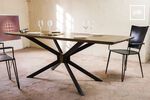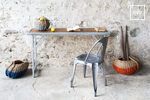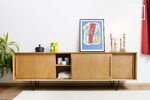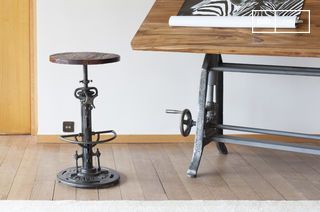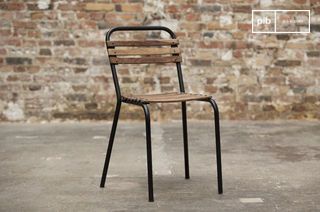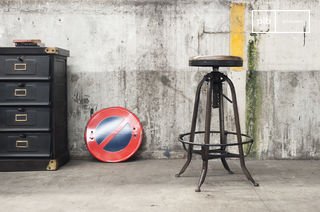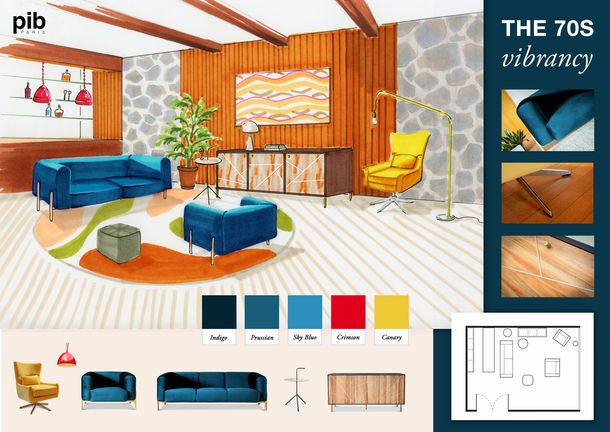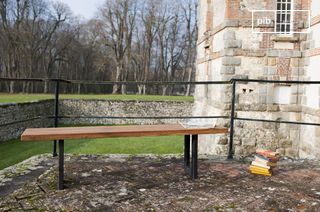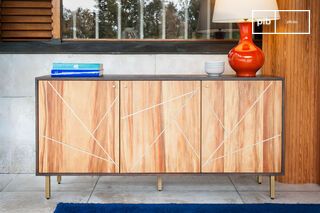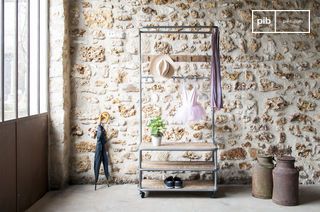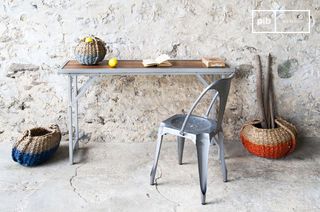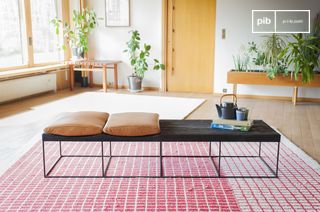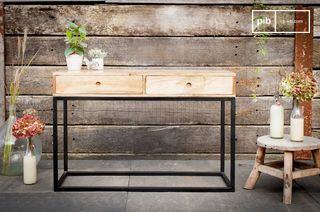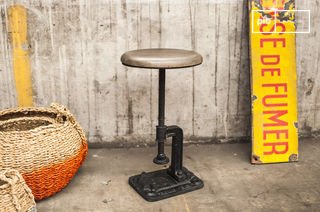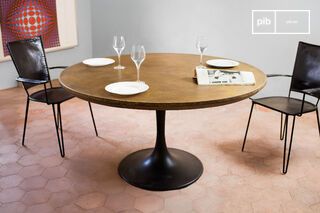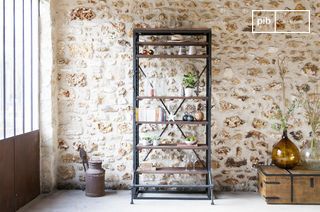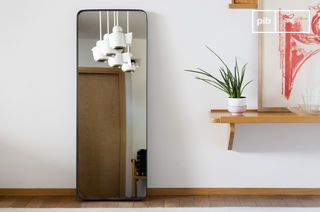Wood and metal
The Wood & Metal category brings together pieces whose construction is based on the assembly of complementary materials. Wood provides a warm, textured visual presence; metal introduces clean lines, visible connections or a load-bearing structure. Together, they create clear contrasts or continuities, depending on the surface treatment. In the same piece of furniture, these materials can interact or clash. Their combination serves to stabilize volumes, lighten shapes or reinforce certain areas, depending on the object's function.
read more >Filters
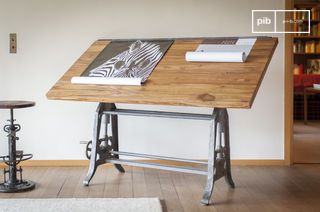
Teak architect table1928
€1680 €1510-10%
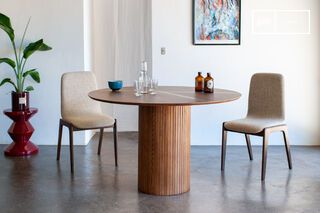
Walnut-tone wood round table for 6Ligna
€780 €700-10%

Round metal coffee table OneXylème
€495 €445-10%
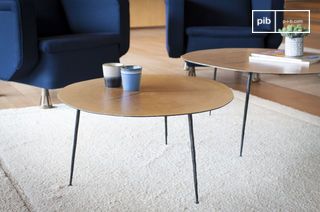
"Round metal coffee table ""Two"""Xylème
€495 €445-10%
10 festive days
10% off our tables and consoles
Welcome your guests in style · Limited stock
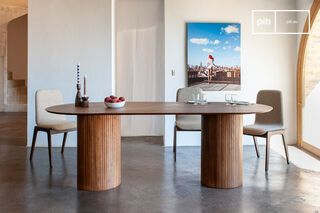
Walnut-tone wood oval table for 8Ligna
€995 €895-10%
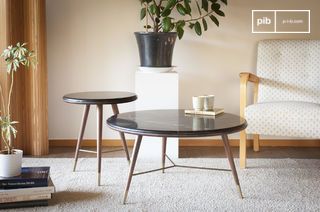
Black marble coffee tableSivart
€765 €690-10%
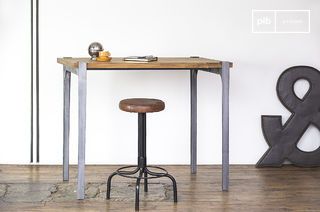
Solid wood high tableWellington
€645 €580-10%
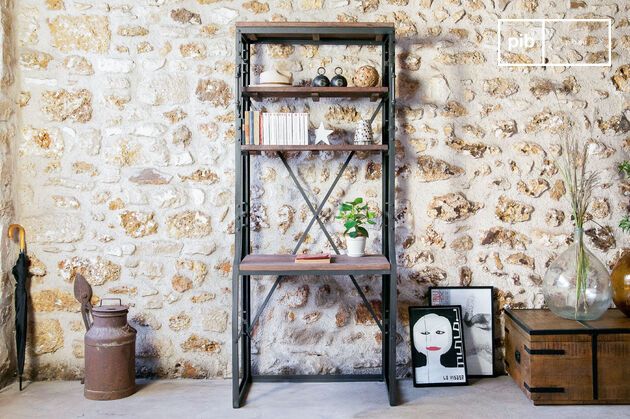
Industrial desk-librarySeattle
€1280 €1150-10%
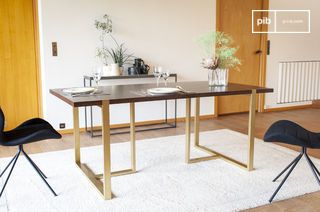
Walnut dining tableNeutra
€780 €700-10%
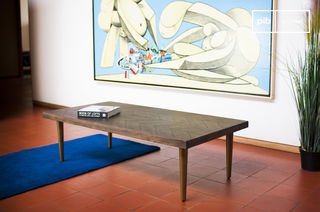
Dark wood coffee tableAlienor
€380 €340-10%
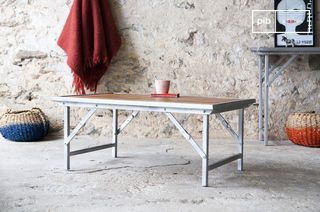
Teak coffee tableBollène
€455 €410-10%
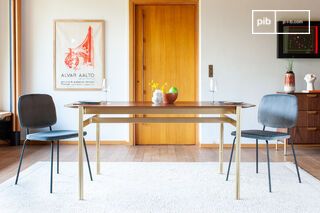
Dark wood dining tableAurora
€880 €790-10%
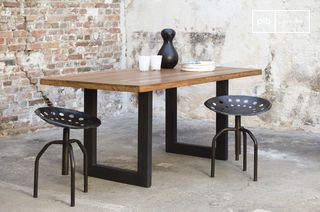
Teak wood tablePeterstivy
€795 €715-10%
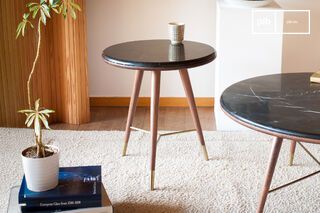
Black marble end tableSivart
€379 €340-10%
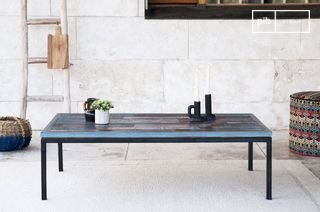
Wooden coffee tableMoriz
€495 €445-10%
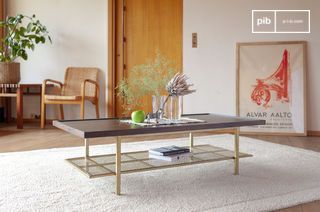
Walnut coffee tableNeutra
€695 €625-10%
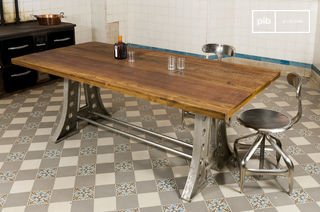
Solid Wood Dining TableNormandie
€1395 €1255-10%
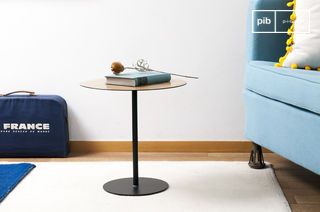
Small round side tableXylème
€260 €235-10%
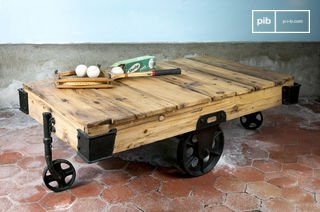
Wooden Coffee TableWood Wagon
€725 €655-10%

Wooden Coffee TableRailway
€530 €475-10%
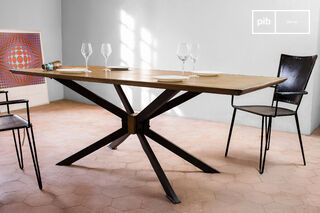
Brass dining tableLiverpool
€1495 €1345-10%
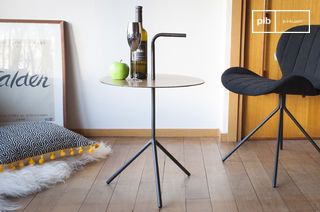
Portable table with handleXylème
€295 €265-10%

Wood and metal combination: structure and perception
Wood and metal are combined in furniture for both technical and visual reasons. Wood, used in tops, bases or fronts, brings an organic feel, shades of color and an irregular pattern. Metal, generally used as a structure or connecting element, guarantees linear stability and a finesse difficult to achieve with other materials. Their assembly helps to balance mass and line, particularly in storage units, tables or seats.
Visual effects produced by wood & metal assembly
The combination of these two materials introduces visual ruptures or continuities depending on the choice of treatment. Oiled or brushed wood can be clearly distinguished from matte or powder-coated metal. Conversely, a dark wood can extend a painted metal structure without strong contrast. In an interior, this type of furniture can mark out a function without weighing down the spatial interpretation. A wood and metal dining table separates an area without partitioning it. A suspended shelf lightens the volume while maintaining a reliable structure.
Uses, resistances and layout logics
Each material imposes its own constraints: wood can expand or shrink, metal can transmit cold or produce noise when used. In combination, these effects are balanced. Metal takes up the load or stiffens, while wood absorbs micro-shocks and regulates contact temperature. Appearance depends on the proportion between the two: a piece of furniture made predominantly of wood with metal details retains a classic look. A metal ensemble with a few wood surfaces is more in keeping with an industrial or technical logic. These choices must be adapted to the actual use of the room, the natural light and the density of the other materials present.
Furniture in the *Wood & Metal* category allows mixed elements to be integrated without a formal break. They can be adapted to sober environments as well as to more contrasting compositions, provided their visual mass is balanced with the rest of the furnishings.
The *Wood & Metal* category of furniture allows mixed elements to be integrated without formal rupture
